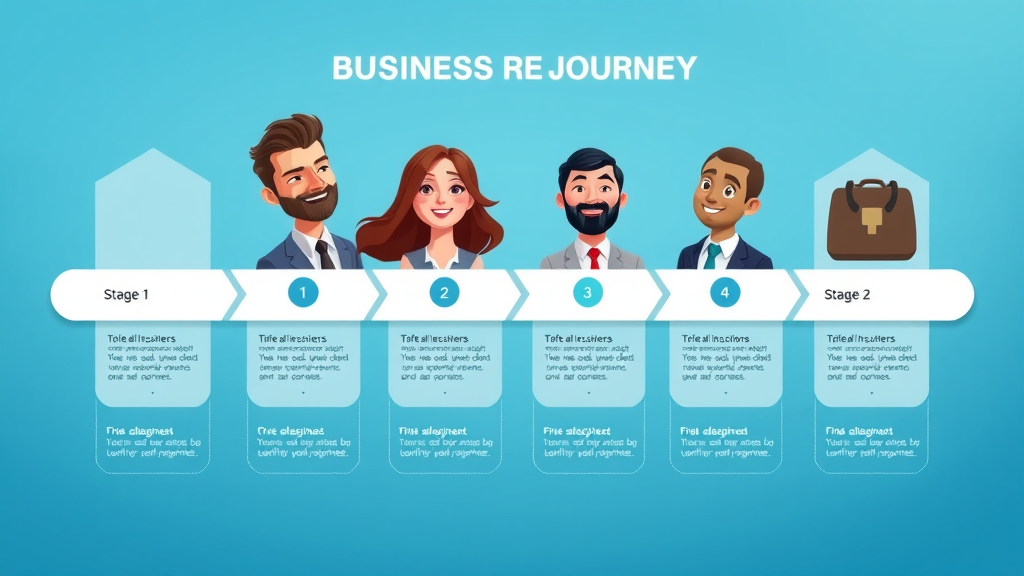Did you know that more than 70% of long-term deal value in B2B settings is directly driven by the strength of your client relationships? Despite brilliant products or lightning-fast delivery, it’s the ability to build strong, trustworthy relationships that secures repeat business and unlocks sustainable growth. In this guide, you’ll discover the critical stages and strategies behind lasting B2B client relationship building—secrets industry leaders use to transform occasional transactions into mutually beneficial partnerships. Keep reading to learn actionable methods that will set your business apart from the competition and turn every client connection into a growth opportunity.
Did You Know? B2B Client Relationship Building Drives 70%+ of Long-Term Deal Value
The true bottom line is clear: B2B client relationship building is the ultimate driver of repeat business and long-term deals. Numerous studies confirm that over 70% of a business’s future deal value and revenue depend not just on the initial sale, but on how well you maintain regular communication, provide exceptional customer service, and anticipate client needs as a trusted advisor . In the fast-paced world of B2B sales where competition is fierce, the best product or service is only as valuable as the relationship supporting it.
Practical examples abound, from industry event networking to consistent, friendly phone calls that reinforce trust. When a sales team treats each client as a unique partner, recognizing signals of growth or concern, deals move from one-off wins to ongoing revenue streams. These client relationships are meticulously nurtured with regular communication channels, ensuring customers feel heard and valued. That’s why relationship management is a core discipline for every small business aiming to achieve sustainable growth.

The Surprising Impact of Effective Client Relationship Strategies
Implementing effective client relationship strategies can be transformative. Businesses that invest in building strong relationships see significant returns: higher customer retention, increased referrals, and customers who become genuine advocates for your brand. In fact, research highlights that companies prioritizing exceptional customer experience outperform their competitors, even when their product or service is similar.
Consistent follow-ups—be it a timely phone call after a project or an update on new solutions—signal to clients that you value the partnership. Over time, these practices turn clients into brand ambassadors, strengthening your reputation and attracting new opportunities. It’s not just about managing transactions; it’s about cultivating a lasting connection that benefits both sides.
B2B Client Relationship Building: The Foundation for Business Growth
B2B client relationship building isn’t a one-time tactic—it’s the bedrock of long-term business development across all industries. In fiercely competitive markets, companies that invest in relationship management outpace those that view deals as simple transactions. Whether you’re a global enterprise or a rapidly scaling small business , the ability to build and maintain client relationships is what leads to sustainable revenue streams and expansion.
Across sectors—from technology to logistics to professional services—businesses that prioritize client relationships not only gain repeat business but also experience a steady rise in customer satisfaction. With robust relationship management, clients feel a sense of partnership, not just procurement, leading to collaborative innovation and joint problem-solving. This approach transforms customers from mere buyers into vocal brand advocates.
Why Strong Client Relationships Matter Across Industries
Every industry benefits from strong relationships with clients. For technology providers, close ties ensure platforms and solutions adapt quickly to customer needs. Logistics firms with deep bonds become extensions of their clients’ teams, anticipating disruptions and delivering personalized service. Even sectors like finance, which may seem transactional, thrive when customer relationships evolve into mutual trust.
When your clients trust your product or service and your sales team communicates regularly, you stay top-of-mind for future needs and referrals. As a result, companies that master client relationship strategies consistently outperform industry averages on metrics like deal value, contract renewal, and partner loyalty.
How Client Relationship Building Powers Small Business Success
For small businesses, every client is crucial—losing even one can have serious implications for overall revenue and growth. Small businesses can leverage the agility and personal touch that bigger competitors may lack by maintaining regular communication, responding quickly to issues, and delivering exceptional customer service. These relationship-building efforts create positive word-of-mouth, repeat business, and opportunities for upselling.
Furthermore, when small businesses treat each client as a strategic partner, their relationships often extend beyond the sale. This leads to collaborative projects, joint marketing campaigns, and even co-innovation. In essence, it’s these tight-knit, trust-based relationships that empower small businesses to compete with industry giants.
| Aspect | B2B Client Relationship Building | B2C Relationship Management |
|---|---|---|
| Sales Cycle | Longer, relationship-driven, multiple touchpoints | Shorter, transactional, fewer touchpoints |
| Decision Makers | Multiple stakeholders, committees | Individual or family members |
| Deal Size | Higher value, recurring revenue potential | Lower value, often one-time purchase |
| Focus | Trust, partnership, ongoing value | Convenience, price, brand loyalty |
| Key Success Metric | Client retention, expansion, advocacy | Customer acquisition, repeat purchases |
What You'll Gain: B2B Client Relationship Building Skills for Sustainable Growth
This guide will help you master the essential skill set for B2B client relationship building . You’ll not only understand the mechanics of relationship management but will also be equipped to implement customer experience strategies that set you apart from the competition. In today’s rapidly evolving digital landscape, the ability to leverage data, harness the power of social media, and execute creative marketing campaigns is essential for maintaining and expanding strong client relationships.
Whether you’re a seasoned sales leader or a new business owner, the insights here will enable you to recognize the signals of a strong relationship and respond proactively. You’ll discover how to integrate modern tools, streamline your customer relationship management processes, and ultimately, deliver value that outlasts any product or service.
- Master the five stages of B2B client relationship building
- Identify strong relationship signals
- Leverage customer experience strategies
- Enhance client relationship management using modern tools
- Implement social media and marketing campaigns effectively
The Five Stages of B2B Client Relationship Building
B2B client relationship building isn’t linear—it’s a dynamic journey through critical stages that move clients from awareness to advocacy. Each step requires a tailored approach for maximum impact, ensuring that no connection stalls or slips away. Understanding these five stages is key for companies intent on building strong, enduring customer relationships.
The journey begins with making strong first impressions, followed by building trust and credibility. It then shifts to expanding value through partnerships, deepening commitment and loyalty, and finally, turning satisfied clients into active brand ambassadors. Mastering each stage ensures your business stays ahead of competitors in both client retention and growth.

Awareness: Making First Impressions in B2B Client Relationships
The awareness stage is all about visibility and initial perceptions. Prospective clients identify your business through marketing campaigns, digital presence, referrals, or networking at an industry event. Here, professionalism, clarity of communication channels, and a compelling introduction are paramount. Remember, a poorly handled phone call or sluggish customer service can end a relationship before it has even begun.
To stand out, ensure your sales teams are trained on brand messaging and prepared to answer initial questions confidently. Prompt follow-ups and clear explanations set the stage for trust. At this stage, even small missteps—like failing to maintain regular communication—can tip the scales away from success, so focus on making every interaction count.
Exploration: Establishing Client Relationship Trust and Credibility
Once awareness is achieved, the exploration phase is when clients “test the waters.” They’ll ask questions, propose pilot projects, or request references to assess your reliability and values. In these moments, transparency and a genuine interest in understanding the client’s business are essential for building a strong relationship.
Elevate trust by providing detailed answers, sharing case studies, and demonstrating consistent communication. At this stage, supportive sales teams should focus on regular phone calls and timely updates to ensure all doubts are addressed. The foundation of a solid customer relationship is built on credibility and responsiveness—qualities that small businesses often excel in.

Expansion: Building Strong Relationships Through Value-Added Partnerships
With trust established, the next objective is to expand the relationship by consistently delivering value. This may include introducing new products or services, sharing unique industry insights, or co-creating solutions. Regular communication channels such as monthly check-ins and collaborative meetings allow both teams to identify additional ways to work together.
Value-added partnerships often mean anticipating client needs and offering solutions before they’re requested—a surefire way to become a trusted advisor. By maintaining regular communication and focusing on customer experience, you position your business as an indispensable partner, not just a vendor.
Commitment: Deepening Customer Relationship and Loyalty
At this stage, both parties commit to a lasting, mutually beneficial partnership. Contracts are signed, joint projects are launched, and new communication channels are formalized—often involving frequent phone calls and in-person meetings. These strong relationships are marked by trust, reliability, and exceptional customer service.
Companies committed to consistent service delivery, proactive problem-solving, and open dialogue will enjoy high levels of client loyalty and repeat business. This is when clients start seeing your firm as an integral part of their success, resulting in deeper collaboration and increasing revenue over time.
Advocacy: Turning Clients into Brand Ambassadors
The final—and most crucial—stage of B2B client relationship building is advocacy . Satisfied clients who have benefitted from your solutions and outstanding customer relationship management will naturally recommend your company to their peers, fueling organic growth and reputation-building.
Encourage advocacy by gathering testimonials, inviting clients to participate in case studies, and publicly celebrating shared successes. Foster a community where top clients can act as references or brand ambassadors, amplifying your reach and attracting similar high-value prospects through their networks.
Relationship Management Techniques for Effective B2B Client Relationships
Modern business growth relies on more than gut instinct— relationship management now means blending technology, analytics, and authentic human engagement. Sophisticated techniques like personalized data usage and omni-channel communication, including social media, have become essential tools for building and sustaining strong client relationships.
Today, successful teams seamlessly combine the warmth of regular phone calls with the efficiency of CRM systems and marketing campaigns. The result is a client journey tailored at every touchpoint, empowering your business to deliver consistent value and maintain regular communication—key factors in customer satisfaction and repeat business.
Leveraging Data for Personalized Customer Experience
The most effective relationship management strategies harness customer data to create personalized experiences. Well-managed data can reveal which products or services drive satisfaction, uncover pain points, and identify moments to upsell without being intrusive. Analytics platforms and CRM systems allow you to track recurring issues, monitor service levels, and segment clients by needs and potential growth.
For example, analyzing feedback from recent marketing campaigns or social media interactions can inform targeted outreach, ensuring each contact—whether a phone call or a digital message—offers maximum value. By leveraging data, your sales team can anticipate concerns before they arise and deliver great customer experiences that foster loyalty.

Using Social Media to Enhance Client Relationships
Social media isn’t just for B2C brands—B2B organizations leverage LinkedIn, Twitter, and other platforms to maintain regular communication and showcase expertise. Real-time messaging, timely content sharing, and even interactive webinars create opportunities to build strong relationships and demonstrate thought leadership. Social media also provides an informal channel for gathering feedback, addressing concerns, and strengthening client trust.
By integrating social media into your relationship management processes, your business stays top-of-mind. Remember, regular online engagement complements traditional phone calls and meetings, building a 360-degree view of each client relationship and ensuring consistent, positive brand experiences.
"People do business with those they know, like, and trust. Building strong B2B client relationships is not a one-time task—it’s a continuous process."
Overcoming Challenges in B2B Client Relationship Building
B2B client relationship building isn’t without its challenges. Barriers may arise from complex decision-making processes, fluctuating expectations, or shifting industry dynamics. Identifying these roadblocks and proactively addressing them ensures the long-term health of your client relationships and your business’s reputation.
Common issues include misaligned goals, difficulty maintaining regular communication, or technological gaps in client management. By tackling these pain points head-on, your team can build strong, resilient relationships even in the face of adversity.
Identifying Barriers to Strong Customer Relationships
The first step to resolution is awareness. Often, barriers stem from poor communication channels, inconsistent customer service, or unclear value propositions. In some cases, out-of-date processes or mismanaged handovers between team members result in lost opportunities and client frustration.
Regularly survey your clients, review data from recent phone calls and emails, and solicit direct feedback to spot issues early. This level of transparency encourages trust, helps you pinpoint weak spots in your process, and builds a foundation for mutually beneficial partnerships.
Solutions for Complex Relationship Management Needs
Overcoming complex management scenarios requires dedicated resources and flexible strategies. Centralizing information using modern CRM systems is an effective way to ensure continuity, especially when multiple stakeholders are involved. These tools allow you to maintain regular communication, track meeting notes, and store customer data securely for future reference.
Encourage a culture of proactive, rather than reactive, problem-solving within your team. Empower every employee to act as a trusted advisor and enable them to use both digital tools and personal outreach methods, like phone calls, to keep clients engaged. Remember, the most resilient B2B relationships thrive on trust and collaboration, not just transactions.

Strategies for Building Strong Client Relationships That Last
To cultivate lasting client relationships, a mix of practical tactics and strategic thinking is required. The following approaches have repeatedly proven effective in building trust and driving customer satisfaction across the B2B landscape. Consistency and communication remain the cornerstones of these strategies, supported by a focus on delivering value beyond basic expectations.
By establishing best practices across sales teams and customer service staff, your organization can consistently foster great customer experiences and nurture loyal, long-term clients. Here are the critical strategies that make the difference:
- Tips for Building Trust
- Effective Communication
- Consistency in Service Delivery
- Proactive Problem Solving
- Delivering Value Beyond Expectations
Integrating Marketing Campaigns in Client Relationship Building
Successful businesses leverage creative marketing campaigns to reinforce relationships and keep clients engaged throughout their journey. Regular updates—through newsletters, tailored offers, or invitations to exclusive webinars—position your organization as a thought leader. These campaigns can showcase new capabilities or celebrate shared milestones, triggering fresh conversations and opportunities with existing relationships.
When marketing is tightly aligned with a company’s values and client needs, it transforms outreach from noise into value-added touchpoints. This approach not only strengthens client relationships but also provides measurable data to optimize future campaigns and ensure consistent impact.

Technology’s Role in B2B Relationship Management
Advancements in technology have revolutionized relationship management, enabling businesses to scale personalized client interactions with precision. From CRM systems to automated workflows, technology streamlines every facet of the customer journey, organizes customer data efficiently, and helps maintain regular communication at scale.
Companies that embrace these tools are better positioned to anticipate needs, track performance, and deliver great customer experiences consistently. Combining human touch with digital capabilities results in satisfied clients and improved bottom-line results.
CRM Systems for Customer Relationship Management
CRM systems have become indispensable for modern B2B organizations. These platforms centralize customer information—emails, phone calls, meeting records—into a single, accessible hub. This not only improves team collaboration but also ensures that valuable context isn’t lost during turnover or staff changes.
CRMs also provide analytics and workflow automation, making it easier to track progress, measure customer satisfaction, and identify opportunities for expansion. As a result, businesses can deliver consistent communication and reliable service, essential for building strong client relationships over the long term.
Automated Solutions for Strong Relationships
Automation tools are reshaping how teams manage existing relationships. Automated follow-ups, reminders for regular phone calls, and dynamic response systems ensure clients never feel neglected. Such solutions are especially beneficial in complex sales cycles where multiple touchpoints and timely action are crucial.
By freeing up time from administrative tasks, automation empowers your team to focus on high-value activities—problem-solving, strategic planning, or simply picking up the phone for a meaningful conversation. Ultimately, these systems help businesses embrace both efficiency and empathy, powering strong, lasting client connections.
People Also Ask: Essential B2B Client Relationship Building Insights
What are the five stages of B2B customer relationship building?
The five key stages are: Awareness (making strong first impressions), Exploration (building trust and credibility), Expansion (creating value-added partnerships), Commitment (deepening loyalty and collaboration), and Advocacy (turning clients into brand ambassadors). Each stage requires a tailored approach rooted in effective relationship management and regular communication.
What is B2B client relationship management?
B2B client relationship management is the process of creating, nurturing, and maintaining strong connections between businesses and their clients. It involves strategic communication, personalized customer experience, and leveraging technology like CRM systems to deliver value and foster loyalty throughout the client journey.
How to establish B2B relationships?
Establishing B2B relationships begins with a strong introduction—through marketing campaigns, industry events, or direct outreach—followed by clear communication and demonstration of value. Building trust, maintaining regular contact (email, phone calls, or meetings), and delivering on promises are essential steps to move from initial contact to long-term client partnerships.
What are the 4 types of B2B customers?
The four types of B2B customers typically are: Producers (manufacturers using products or services in their operations), Resellers (businesses that sell products/services to others), Governments (public sector organizations or agencies), and Institutions (nonprofits, hospitals, schools). Each group has unique needs and requires specific relationship management strategies.
Frequently Asked Questions About B2B Client Relationship Building
- What differentiates B2B client relationships from B2C? B2B client relationships are typically longer-term, involve multiple stakeholders, and focus on partnership and mutual value. In contrast, B2C relationships are usually shorter, more transactional, and emphasize convenience and brand loyalty.
- How can technology enhance B2B client relationship building? Technology, including CRM and automation, streamlines communication, centralizes customer data, and supports personalized experiences, making it easier to nurture and grow strong client relationships at scale.
- Why is customer experience crucial for strong B2B relationships? Exceptional customer experience builds trust, satisfaction, and loyalty—turning occasional transactions into ongoing partnerships and encouraging referrals that fuel business growth.
- What mistakes should be avoided in client relationship management? Avoid neglecting regular communication, failing to deliver on commitments, overlooking client feedback, and relying solely on digital touchpoints without a human connection.
Key Takeaways: B2B Client Relationship Building Best Practices
- Long-term deals rely on customer relationship strategies
- Strong relationships are built on trust, value, and proactive management
- Technology and personalized experience accelerate relationship growth
- Consistency and communication are foundations for lasting relationships
Ready to Build Strong B2B Client Relationships That Drive Results?
Start Implementing Proven Relationship Management Strategies Today
Start building strong B2B client relationships by mastering communication, leveraging technology, and prioritizing customer experience—each step will strengthen your bottom line and fuel long-term business growth.
 Add Row
Add Row  Add
Add 




Write A Comment